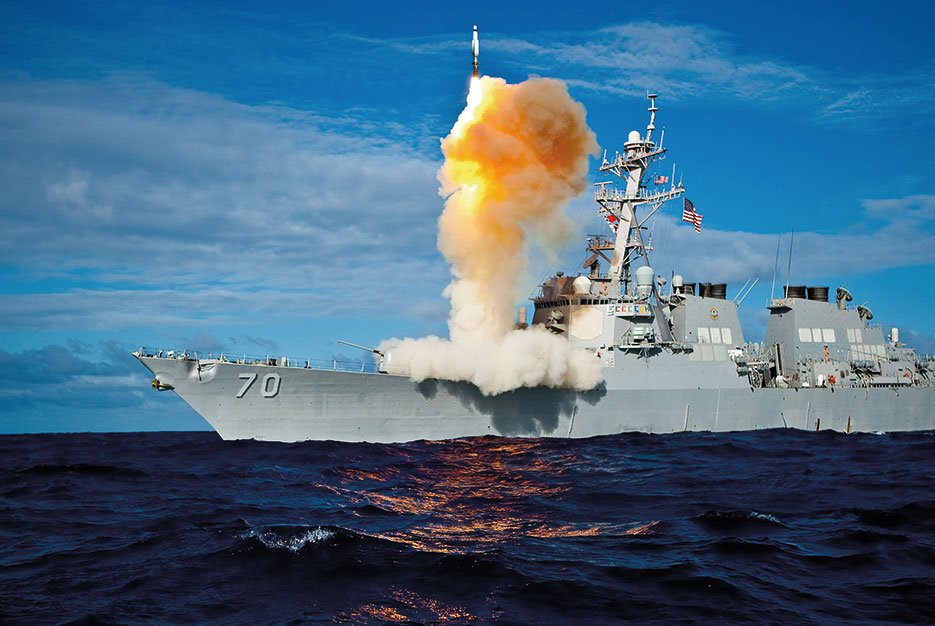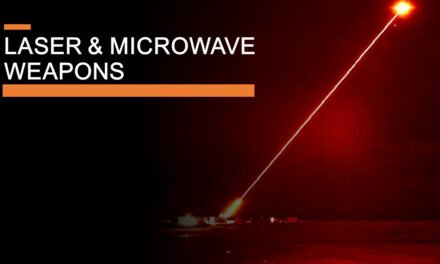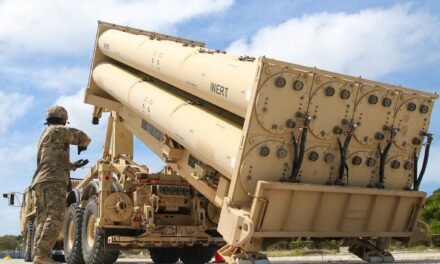Modern warships integrate advanced missile defense systems to provide multi-layered protection against aerial, surface, and underwater threats, including ballistic missiles, cruise missiles, drones, and aircraft. These systems use sophisticated radars, interceptors, and electronic countermeasures, operating together as a cohesive defensive network. Here’s how modern warships achieve this integration:
1. Multi-Layered Defense Architecture
Warships deploy a layered defense strategy to intercept threats at different ranges and phases of their trajectory:
- Outer Layer: Long-range systems engage threats as far from the ship as possible.
- Middle Layer: Medium-range systems provide redundancy against threats that penetrate the outer layer.
- Inner Layer: Close-in weapon systems (CIWS) act as the last line of defense.
2. Key Components of Integrated Missile Defense on Warships
A. Detection and Tracking
- Advanced Radar Systems:
- Detect and track incoming missiles or aircraft.
- Provide high-resolution data for precise targeting.
- Examples:
- AN/SPY-1: Phased-array radar used in the Aegis Combat System.
- SMART-L: Long-range radar for ballistic missile detection.
- Electro-Optical and Infrared Sensors:
- Complement radar systems by detecting low-observable threats like stealth aircraft or sea-skimming missiles.
B. Command and Control (C2) Systems
- Combat Management Systems (CMS):
- Integrate data from all sensors and weapons.
- Provide real-time threat evaluation and prioritize responses.
- Examples:
- Aegis Combat System (U.S.): Coordinates multi-layered defense for destroyers and cruisers.
- Tacticos CMS (Netherlands): Modular system used by navies worldwide.
C. Missile Interceptors
- Surface-to-Air Missiles (SAMs):
- Engage threats at long and medium ranges.
- Examples:
- Standard Missile-3 (SM-3): Intercepts ballistic missiles in midcourse flight.
- ESSM (Evolved SeaSparrow Missile): Medium-range interceptor for cruise missiles and aircraft.
- Close-In Weapon Systems (CIWS):
- Provide rapid-response defense for short-range threats.
- Examples:
- Phalanx CIWS: Uses a 20mm Gatling gun for missile interception.
- SeaRAM: Combines CIWS with Rolling Airframe Missiles (RAM).
3. Integration of Missile Defense Systems
A. Sensor Fusion
- Warships combine inputs from multiple sensors (radar, sonar, infrared) to create a unified picture of the threat environment.
- Example: Aegis integrates SPY-1 radar with satellite data for global missile tracking.
B. Data Sharing and Interoperability
- Network-Centric Operations:
- Warships exchange data with other ships, aircraft, and land-based systems for coordinated defense.
- Example: NATO’s Link 16 network enables real-time communication between allied vessels and aircraft.
- Integration with Regional Defense:
- Modern warships contribute to broader missile defense architectures, such as the U.S. Aegis BMD network, which integrates land-based systems like THAAD.
4. Protection Against Specific Threats
A. Ballistic Missiles
- Intercepted during midcourse or terminal phases using systems like the SM-3 or SM-6.
- Example: Aegis-equipped destroyers and cruisers can detect and intercept ballistic missiles at high altitudes.
B. Cruise Missiles
- Sea-skimming cruise missiles are detected by radars like SPY-6 and engaged by medium-range missiles (e.g., ESSM) or CIWS.
- Example: Russia’s P-800 Oniks missile necessitates advanced radars and SAMs for effective defense.
C. Hypersonic Missiles
- Hypersonic threats are challenging due to their speed and maneuverability.
- Warships are being equipped with advanced tracking systems (e.g., SPY-7 radar) and hypersonic interceptors under development.
5. Redundancy and Fail-Safe Measures
Modern warships incorporate multiple systems to ensure that no single failure compromises defense:
- Overlapping Systems:
- Long-range interceptors like SM-3 are backed by medium-range systems like ESSM and CIWS for redundancy.
- Automated Responses:
- Systems like CIWS can operate autonomously to engage threats when manual response time is insufficient.
6. Integration with Emerging Technologies
A. Artificial Intelligence (AI)
- AI enables faster threat analysis, target prioritization, and real-time decision-making.
- Example: AI-driven sensor fusion improves tracking of hypersonic and stealth threats.
B. Directed Energy Weapons (DEWs)
- High-energy lasers and microwave systems are being integrated to counter low-cost, high-volume threats like drones and swarms.
- Example: The U.S. Navy’s Laser Weapon System (LaWS) has been tested aboard warships.
C. Hypersonic Defense
- New interceptor systems are under development to handle hypersonic threats.
- Example: U.S. Glide Phase Interceptor (GPI) is being designed for Aegis systems.
7. Examples of Warships with Advanced Missile Defense Systems
A. U.S. Navy’s Arleigh Burke-Class Destroyers
- Equipped with the Aegis Combat System, SM-3, SM-6, ESSM, and CIWS.
- Provide integrated air, missile, and ballistic defense.
B. Japan’s Maya-Class Destroyers
- Feature Aegis BMD capabilities for regional missile defense.
C. Russia’s Admiral Gorshkov-Class Frigates
- Armed with Poliment-Redut SAMs and advanced radar for layered defense.
D. France’s Horizon-Class Frigates
- Employ the PAAMS (Principal Anti-Air Missile System) with Aster missiles for air and missile defense.













